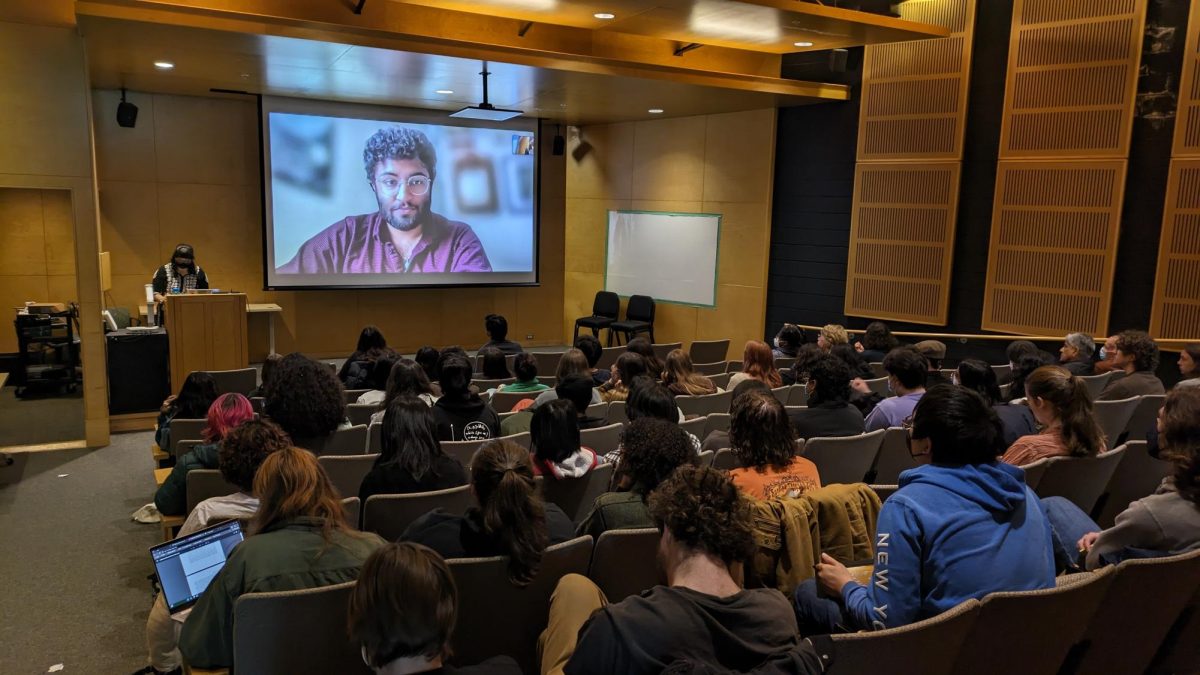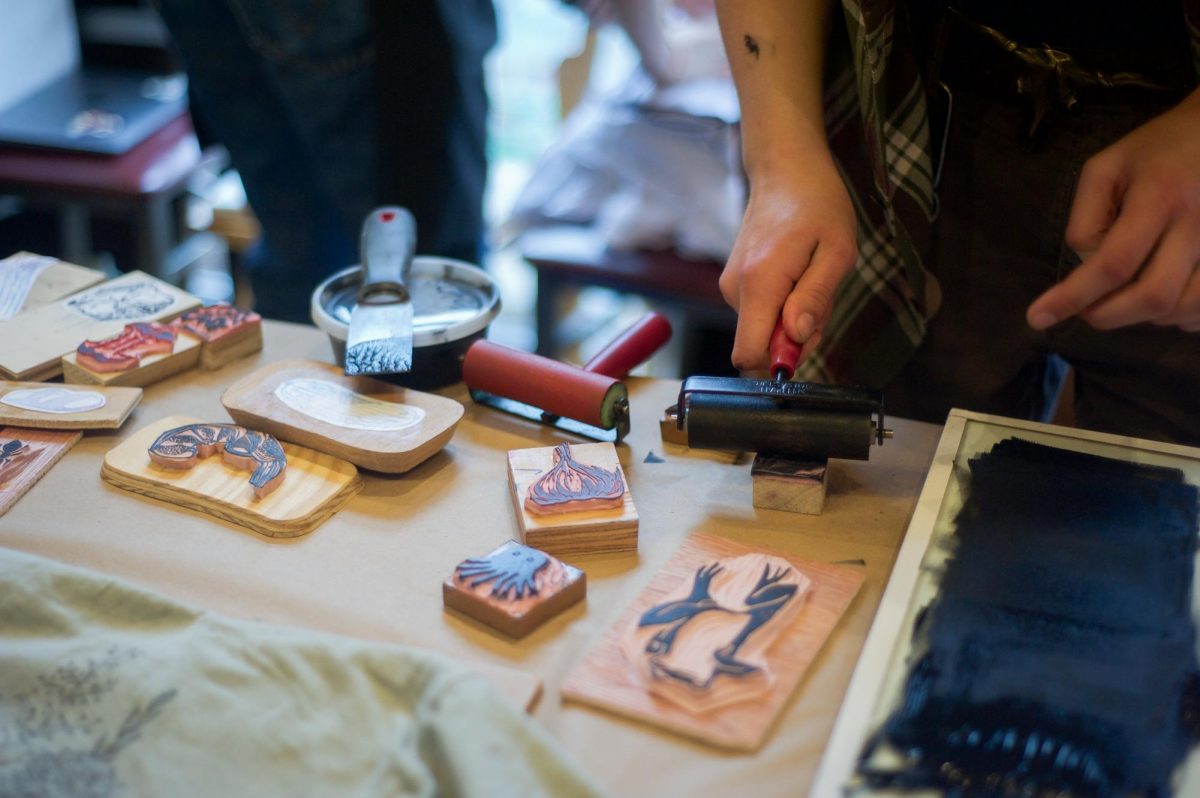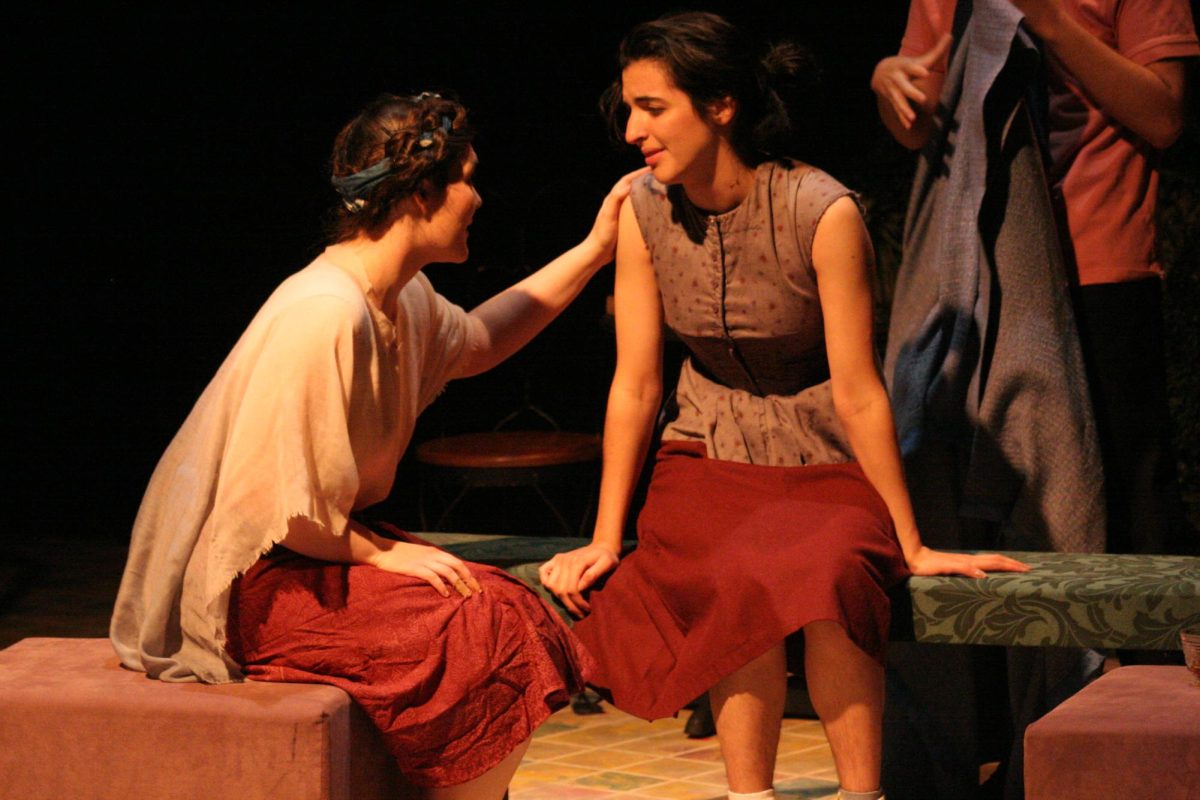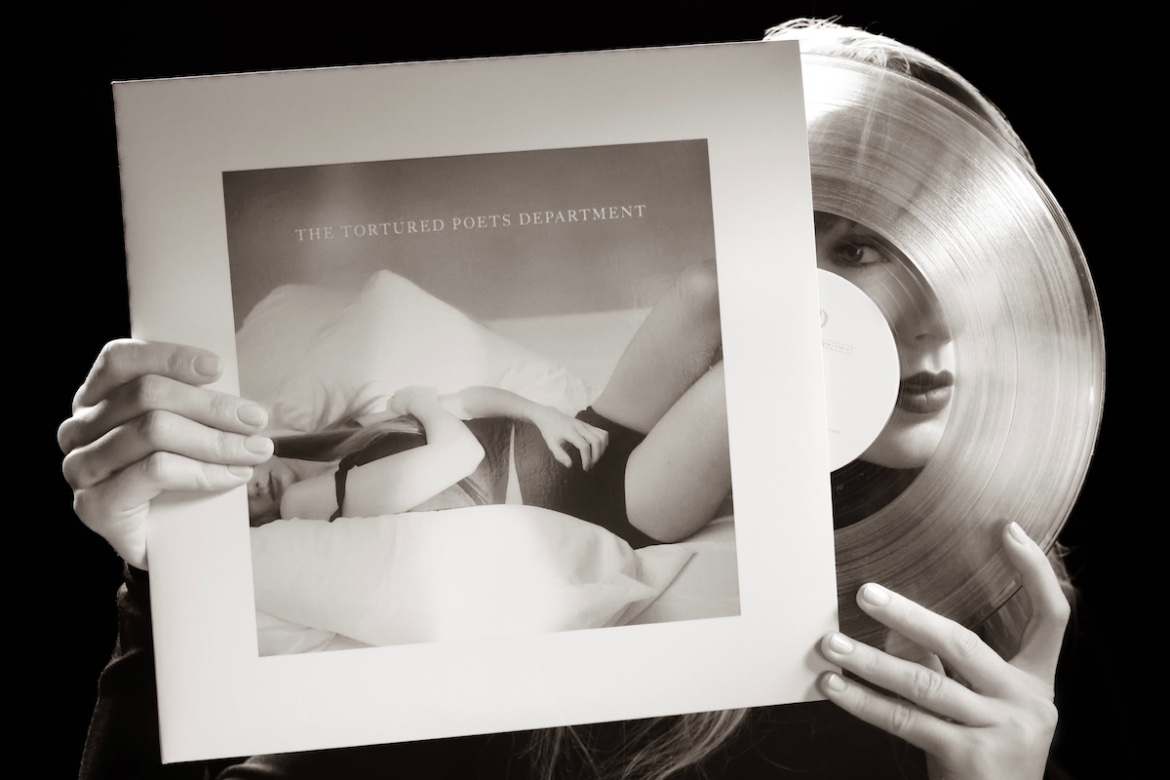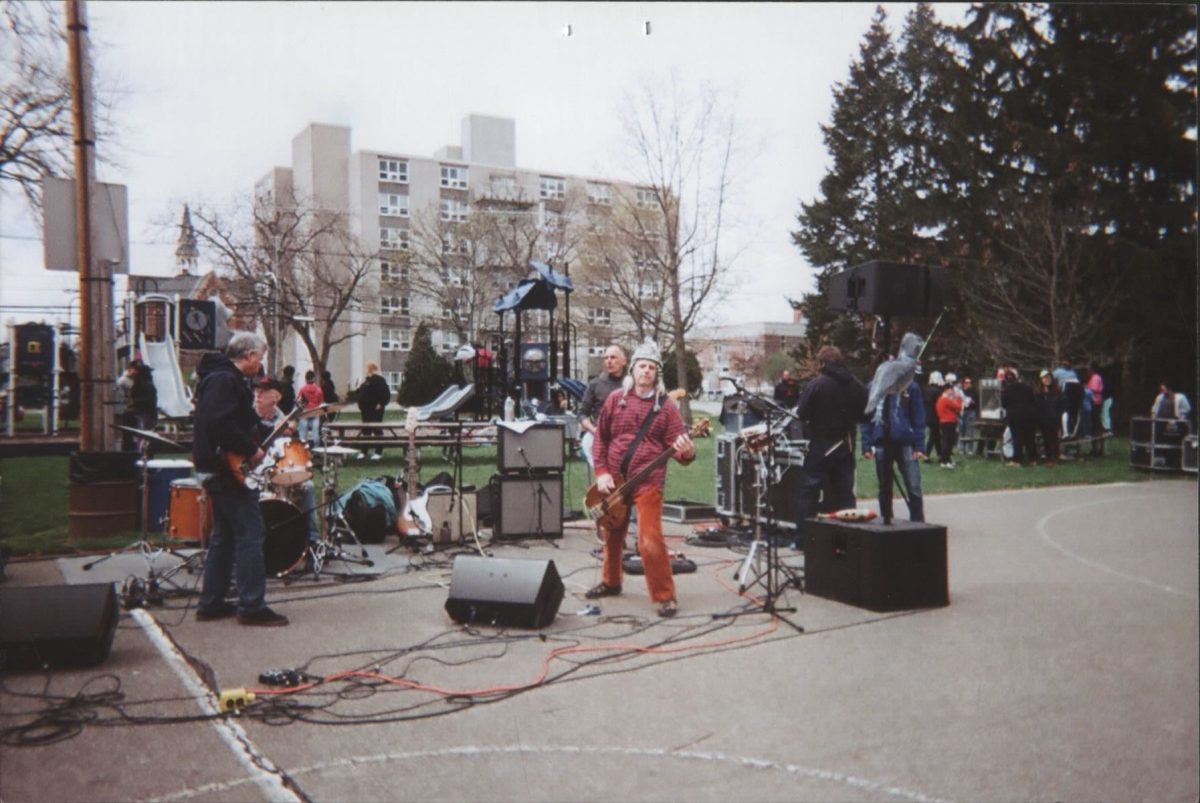Thanks to WITS, Poetry Inspires, Empowers at Langston Middle School
December 2, 2016
Anticipatory conversation hummed in the Cat in the Cream Tuesday evening as a full audience awaited the start of the annual poetry reading by Langston Middle School students. The event serves as the culmination of the Writers-in-the-Schools program every fall semester, during which the students of Creative Writing 450: Teaching Imaginative Writing take up short residencies with a Langston class to teach lessons on reading and writing poetry.
“We essentially had a book launch for these kids, which is so exciting that that’s a thing that you can do in middle school,” said College senior and Creative Writing major Elizabeth Rubel, who taught a class of seventh graders. “The reading in the Cat in the Cream was really fun. It’s not a huge space, and there were a lot of people there, so there was just a lot of energy and the kids were clearly … excited and nervous, but a whole lot of them got up and read.”
Public performance — especially of personal material — can be a daunting prospect, but most students who attended decided to read.
“I’m not sure I would have been brave enough to stand up and read poetry in front of a room full of people in sixth grade, seventh and eight grade, so … props to them for doing that,” Rubel said.
“We worked with 95 middle school students this fall, and almost half of them participated in the Cat in the Cream celebration,” Assistant Professor of Creative Writing Lynn Powell, who introduced the program’s teaching practicum courses and coordinates the Writers-in-the-Schools program, wrote in an email to the Review.
Also impressive was the depth and variety of the poems they read, ranging thematically from favorite foods to childhood memories, to abstract concepts like communication and loss, or sadness as “a dark corner in a quiet room.”
“There was one that was very funny; the kid was such a comedian,” Rubel said. “It was a favorite food poem … and he had this whole dramatic rendition [about] microwaving a hot pocket and eating it, and he really hammed it up for the audience.”
Several students read poems inspired by photographs of meaningful childhood memories. Others were inspired by a prompt on unconventional relationships of fame, such as paint being famous to art or pens to paper. Another popular lesson was one on fantastical cities, which a Creative Writing resident had taught using an excerpt from Italo Calvino’s novel Invisible Cities, which is comprised of dozens of descriptive prose poems. This novel inspired imaginative works outlining life in cities made of impossible materials like ice or glass.
“Fewer … read personal poems than wrote personal poems, … which is completely understandable,” Rubel said. She read several deeply personal poems by students she had in class, particularly from a lesson she taught using a poem about origins. The lesson focused on experiential input like smells and sounds and stories to create what she described as “a ‘where you’re from’ that wasn’t based on a place but on an experience.”
“There’s a student in the class that I taught who’s from Puerto Rico, … and the first day we were working with this class … he wrote his poem in English, and then wrote it again in Spanish,” Rubel said. “Another poem, [ for] the ‘Where I’m from’ poem prompt, he wrote ‘I’m from Puerto Rico,’ and it wasn’t in Spanish, but it had a lot of Spanish in it and was one of the best poems I think to come out of that lesson.”
While he didn’t read either poem at the Cat in the Cream, he did share them with his classmates the day before the performance, which he’d been very reluctant to do.
“I got the impression he wasn’t sure how speaking Spanish was going to fit into an English classroom,” Rubel said.
This student’s progress working through questions of identity and otherness encapsulates why people like Powell are so passionate about teaching creative arts in public schools, regardless of the fact that many — or most — of those students will not pursue careers as professional writers. One counterargument to the claim that exposure to art and creative processes is an impractical use of time for most students in public schools is that such processes provide outlets for the kinds of internal conflicts other activities really can’t address.
“They goofed around, they had fun with it, but it was really cool to see how for a lot of them it was a good outlet for things they maybe didn’t have … some other space to deal with,” Rubel said.
“So often a child or young adult imagines they are the only one who feels what they feel or thinks what they think,” Powell wrote. “For both writer and listener, these experiences exercise the muscles of imagination, insight, and empathy. … It doesn’t matter whether any of these children become professional writers. What does matter is that they become more attentive to their own lives and to the lives of those around them.”
In the words of seventh grader Katherine Doane, “Do not stop / giving life to / the blank slate of space / that cannot be broken / Do not stop, Do not stop, / and, Oh!”





